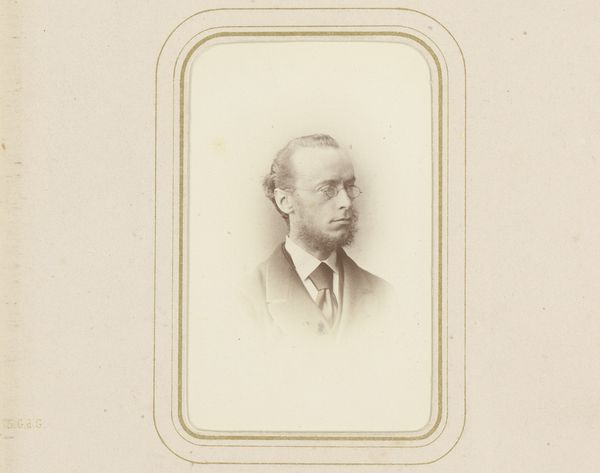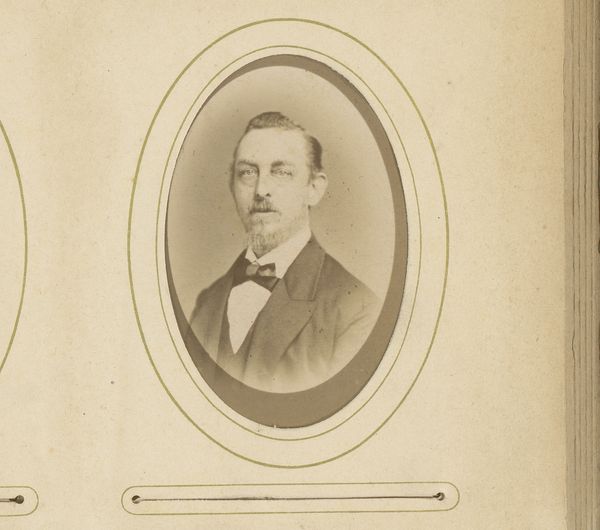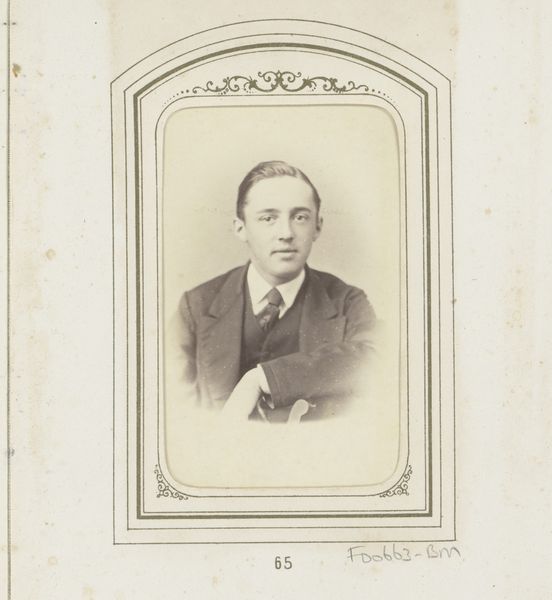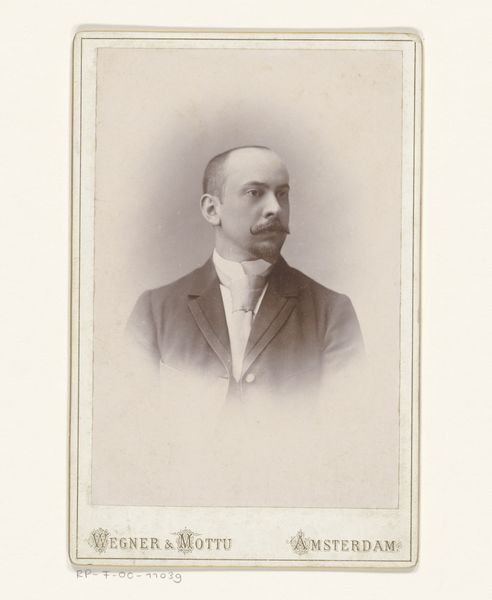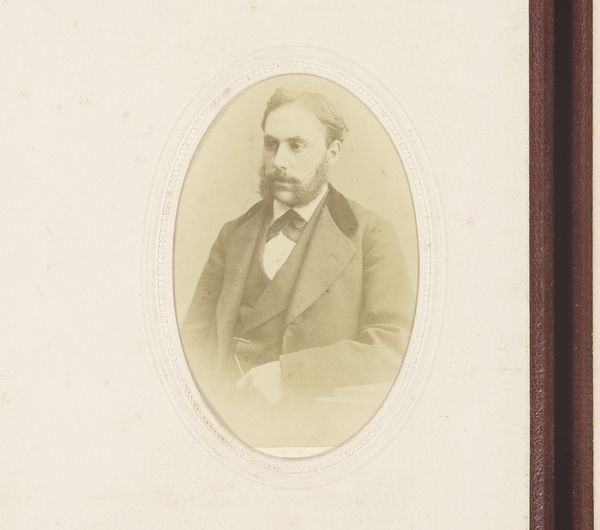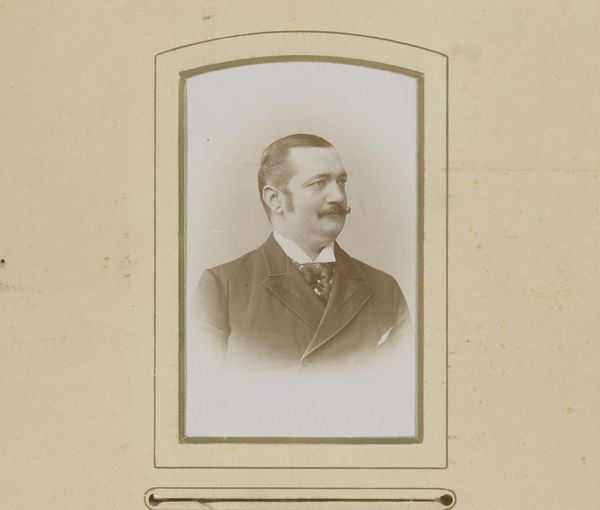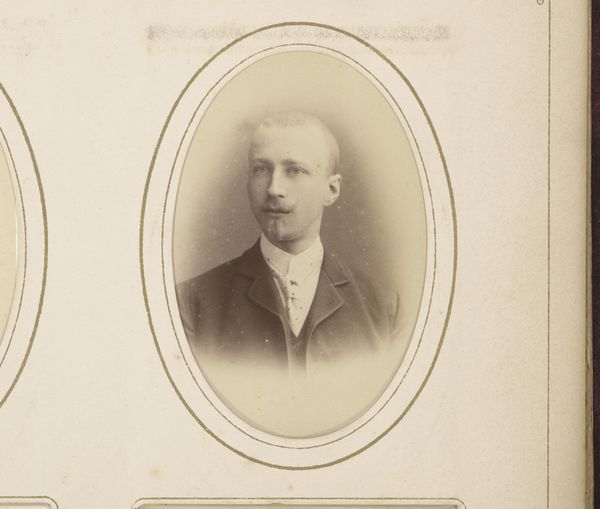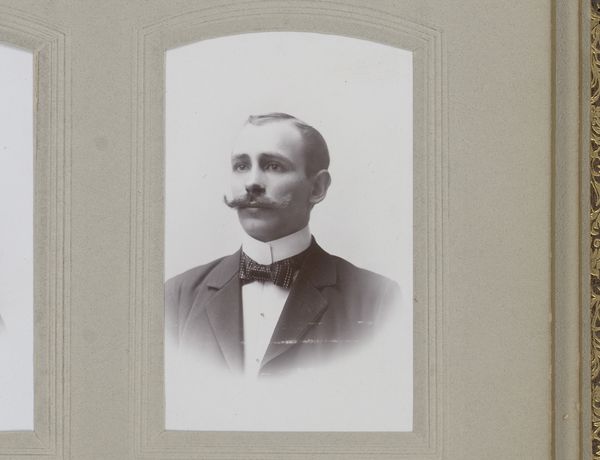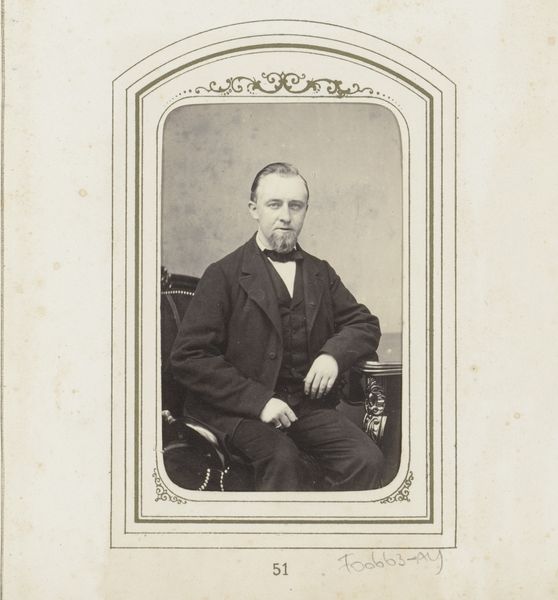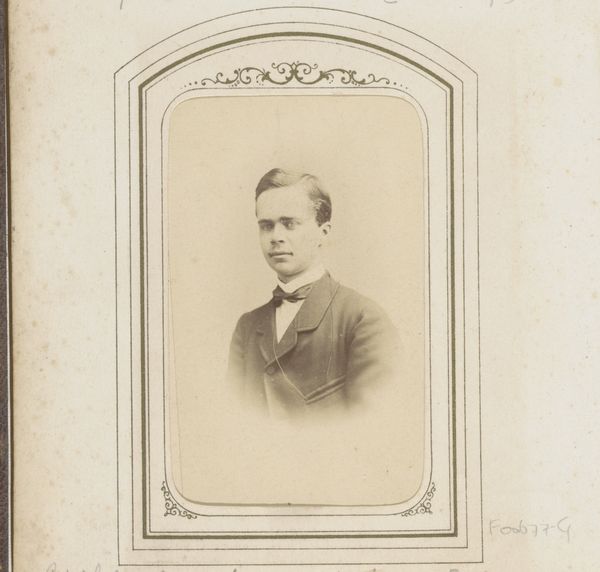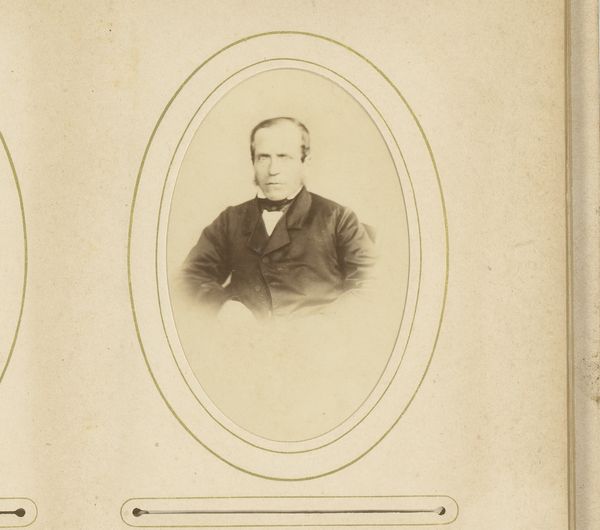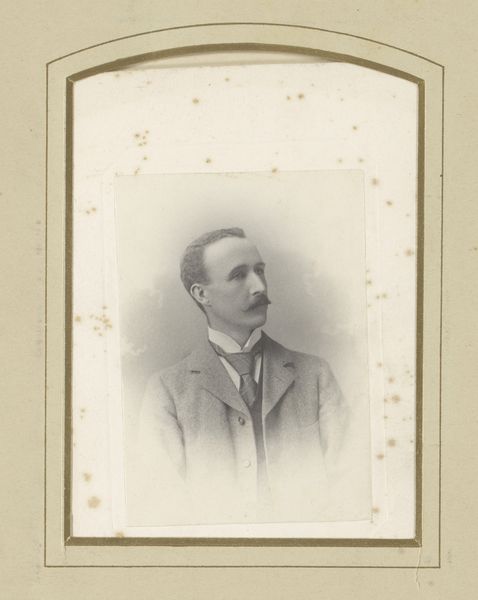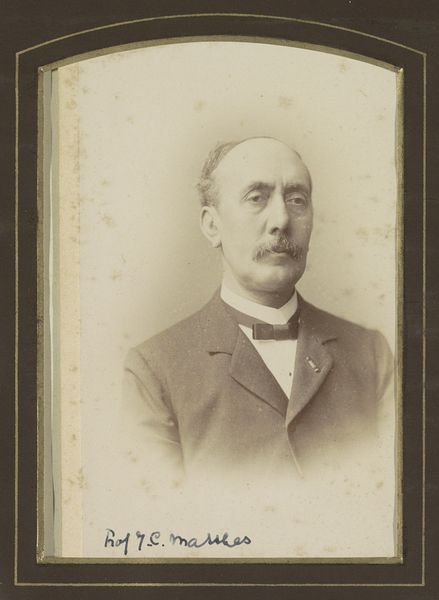
photography, gelatin-silver-print
#
portrait
#
photography
#
historical photography
#
gelatin-silver-print
#
19th century
Dimensions: height 85 mm, width 53 mm
Copyright: Rijks Museum: Open Domain
Editor: Here we have “Portret van een man” or “Portrait of a Man”, created sometime between 1860 and 1880 by F. Springmeier. It's a gelatin-silver print, so it has a beautifully subtle range of tones. What strikes me most is the sitter's formal attire, juxtaposed with an almost unsettling intensity in his gaze. What historical narratives does this photograph bring to your mind? Curator: It certainly speaks volumes about the conventions of the time. The very act of commissioning a photograph like this speaks to a rising middle class and their aspirations. This was during the era of the carte-de-visite, when photographic portraits became somewhat democratized. However, consider who *doesn’t* have access to this technology. What does that tell you about representation and power at this time? Editor: That’s a good point. Photography, though more accessible than painting, was still a privilege. So this image is not just a personal memento, but also a statement of social standing? Curator: Precisely. And look at the framing, the ornamentation. It's designed to elevate the subject, to reinforce a sense of importance. Early photography adopted conventions of painting to grant validity, didn’t it? And if this was a carte-de-visite, think about how many copies were circulated and who saw them. It becomes a tool for social networking, really. Editor: Fascinating. So much is communicated, even in what seems like a simple portrait. I hadn't considered the photograph as a circulating tool, not just an individual image. Curator: It allows us a window into the aspirations and social dynamics of the 19th century. Looking closely at things we often consider simple documents shows us power structures at work. What do you make of the neutral backdrop against the ornately framed image? Editor: It makes it even clearer how every part of the image - background included - played a role in upholding social hierarchies of that time! Thanks for offering a completely new view into what I initially thought was a pretty simple image.
Comments
No comments
Be the first to comment and join the conversation on the ultimate creative platform.
